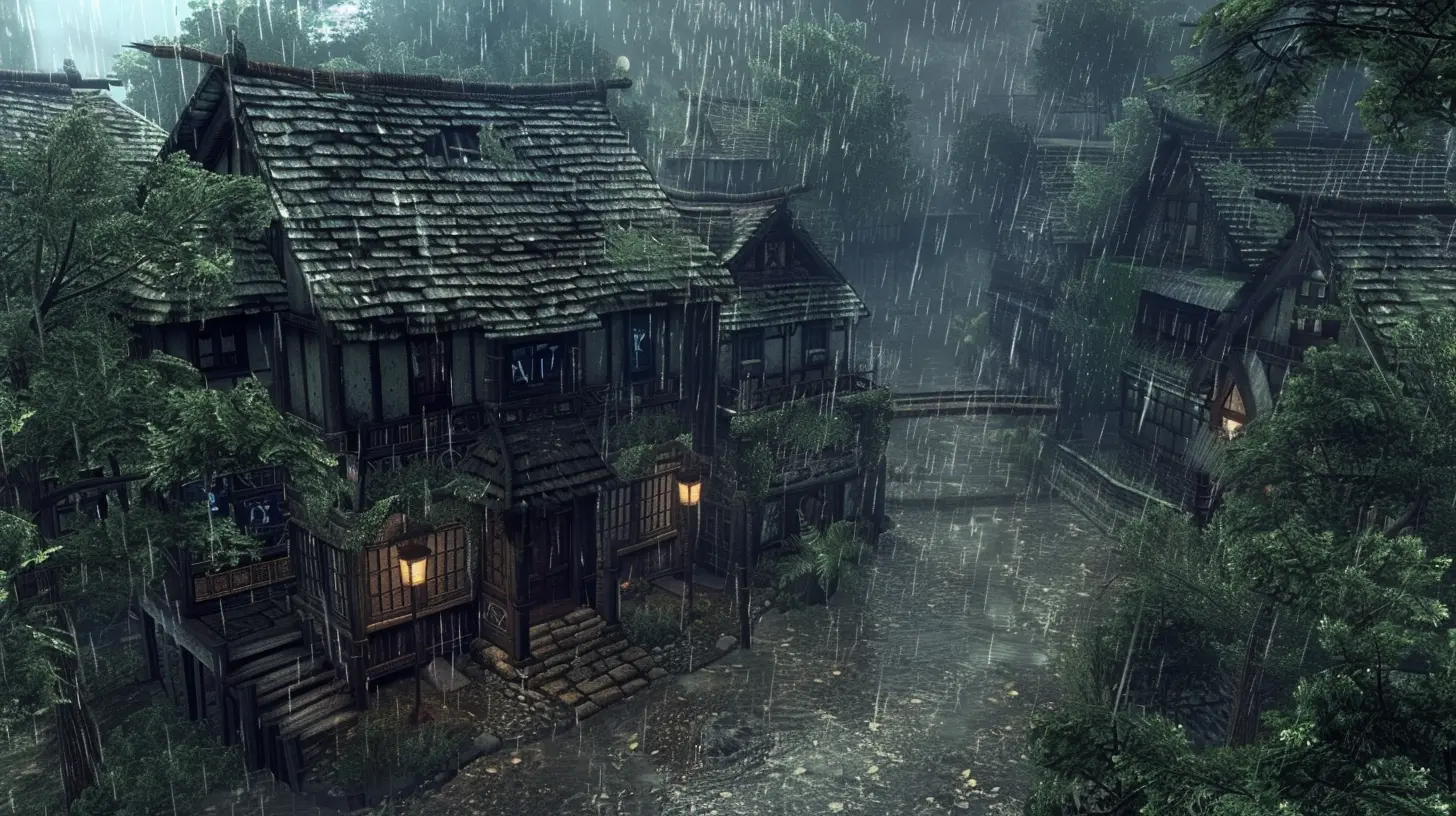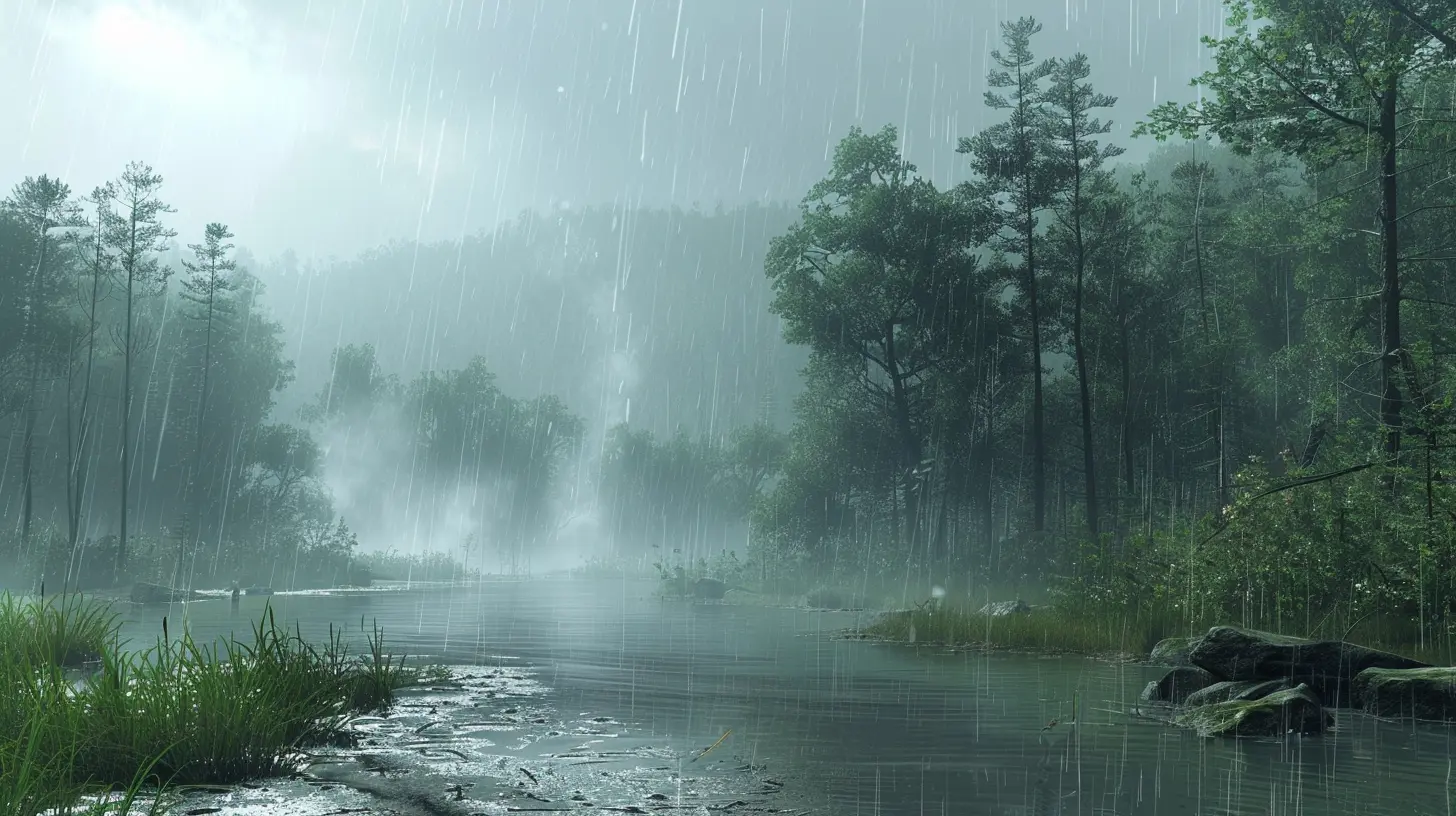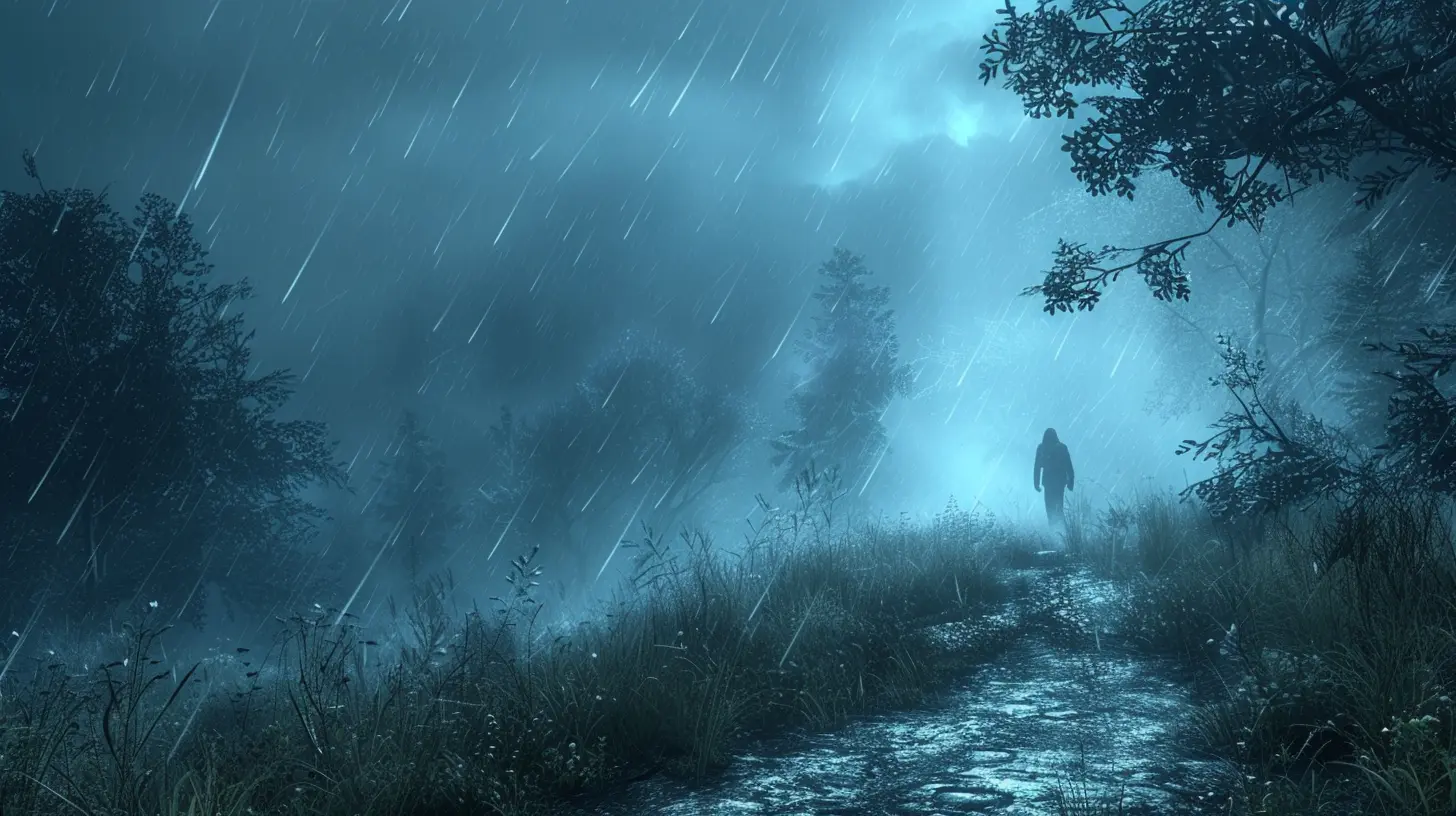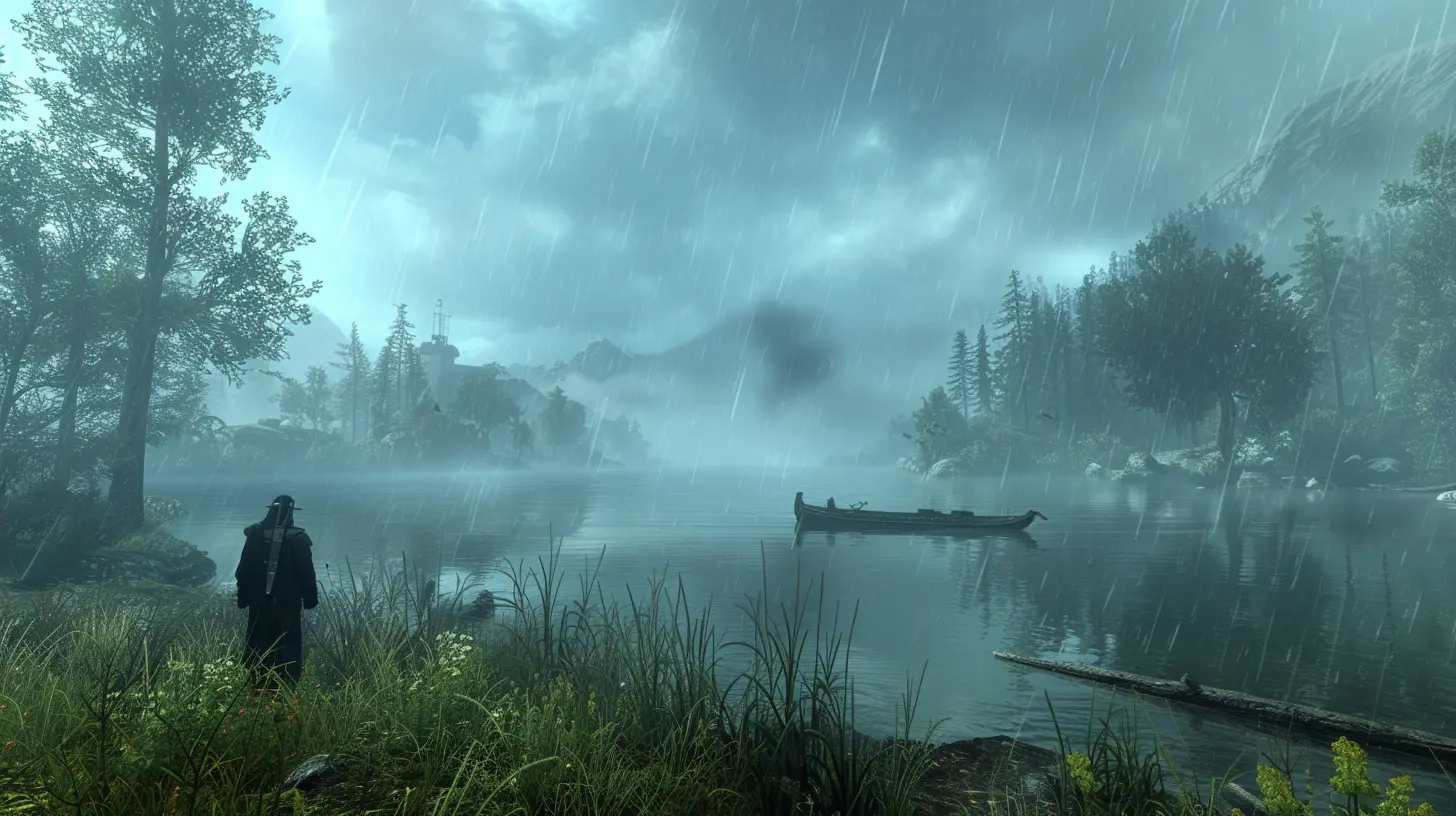Dynamic Weather and Environmental Effects in RPGs: More Than Just Background
14 December 2024
Have you ever been caught in a fierce digital storm while adventuring in a role-playing game (RPG)? Or maybe felt chills run down your spine as the screen filled with eerie fog in a haunted forest? If you're nodding along, you're not alone. Dynamic weather and environmental effects in RPGs are often the unsung heroes of immersive gaming. They’re not just pretty backdrops or atmospheric eye candy—they’re game-changers (pun intended) that can elevate your gameplay experience to a whole new level.
Let’s dive into why weather and environmental effects are more than just background noise in RPGs and what makes them such a vital and fascinating part of the genre today. 
Why Do Weather and Environmental Effects Matter?
Picture this: you're playing an RPG, your character is trudging through a snow-covered mountain range, and all of a sudden, the wind picks up. Snowflakes swirl wildly, visibility drops, and a biting cold nibbles at your health bar. You aren’t just controlling a character—you’re feeling the world around you.Dynamic weather and environmental effects do so much more than set the mood. They influence gameplay, evoke emotions, and immerse you in the story like never before. They're the invisible puppeteers pulling at your gamer heartstrings, creating an experience that feels alive, unpredictable, and—most importantly—real. 
Setting the Mood: The Emotional Impact of Weather
Ever noticed how a sudden downpour or a dramatic sunset can change the vibe of a scene completely? Weather in RPGs operates like an emotional amplifier. It strengthens the story’s tone and pulls you deeper into the narrative.Take a dark and rainy night, for example. If you’re exploring a desolate village abandoned by its inhabitants, the rain doesn’t just make the setting look creepier—it makes you feel the despair of that place. It’s as if the world agrees with the story and mourns alongside you. And when the skies finally clear, that golden sunlight breaking through storm clouds can feel like hope materialized.
Think about games like The Witcher 3: Wild Hunt, where the weather system isn’t just a decorative element but an emotional thread woven into the fabric of the story. A thunderstorm rolls in as you prepare for a climactic battle. Coincidence? I think not. 
Enhancing Gameplay Mechanics
Now, let’s talk about the nitty-gritty—gameplay. Dynamic weather and environmental effects aren't just aesthetic; they can seriously mess with (or enhance!) how you play.1. Challenging Your Skills
Rain might make surfaces slippery, so good luck hitting that perfect shot with your bow. Snow, on the other hand, might slow down your movement, forcing you to adapt your strategy on the fly. These effects push players out of their comfort zones and keep the gameplay fresh and unpredictable.For example, in The Legend of Zelda: Breath of the Wild, rain isn’t just a minor inconvenience. It makes climbing surfaces challenging, forcing you to either wait for the skies to clear or come up with a creative workaround. It’s frustrating, but in the best way—it demands adaptability and rewards creative problem-solving.
2. Impact on Combat
Weather can also directly affect combat. Ever faced an enemy while a sandstorm limits your visibility? Or tried to wield a lightning-infused sword during a thunderstorm, only to realize you're now a walking lightning rod? These elements create layers of strategy and immersion that wouldn’t exist otherwise.In RPGs like Skyrim, mods and expansions even take weather effects to extreme levels. Snowstorms might sap your stamina faster, while extreme cold could lead to hypothermia if you don’t dress appropriately. It’s like Mother Nature herself joins the roster of in-game antagonists. 
Immersion: Turning a Game World into a Living World
One of the coolest things about dynamic weather systems is how they make game worlds feel alive. It’s not just the NPCs following their daily routines or the quests popping up on your map—it’s the fact that the world itself is unpredictable, just like in real life.When you walk into a bustling city in an RPG, you expect people to react to the weather, right? Umbrellas pop open in the rain; NPCs complain about the heat during a scorching day. Little details like this make the environment feel less like a static backdrop and more like a living, breathing world.
Take Red Dead Redemption 2, for instance. Arthur Morgan’s coat gets wet in the rain. Mud clings to his boots. The sky changes color as a storm approaches, and animals scatter for shelter. It’s little touches like these that make you forget you’re playing a game.
Environmental Effects Beyond Weather
Now, let’s zoom out a bit. While dynamic weather gets a lot of praise, it’s worth mentioning that environmental effects go far beyond just clouds and rain. Things like foggy swamps, volcanic ash falling from the sky, or even bioluminescent plants glowing in a magical forest all play a role in setting the tone.1. Mystery and Danger
Foggy areas, for example, are a classic trope but for a good reason. If you can’t see what’s ahead, every step you take feels like a gamble. Something lurking in the mist could be a friend…or your doom. Games like Silent Hill made this mechanic iconic, and even RPGs have borrowed the idea to crank up the tension.2. Inherent Storytelling
Think about environmental effects as silent storytellers. The eerie green glow of radioactive waste in post-apocalyptic RPGs like Fallout doesn’t need a narrative—it is a narrative. These visual cues provide context and atmosphere without needing a single word of explanation.The Tech Behind the Magic
On a technical level, crafting dynamic weather systems isn’t easy. Developers have to balance beauty with function while ensuring performance doesn’t tank. These systems are often built to transition seamlessly—clouds rolling in, rain starting, and puddles forming on the ground all happen in real time.Games increasingly use AI and procedural generation to handle these effects. This means no two storms are exactly the same. And let’s be honest, who doesn’t love that kind of variety?
Why We Love (and Need!) Dynamic Environments
Why do gamers like us appreciate these features so much? Simple—they make us forget we’re looking at a screen. Dynamic weather and environmental effects don’t just enhance RPGs; they make them unforgettable.Imagine stripping away the weather system from your favorite RPG. Sure, you’d still have the story, characters, and quests, but the soul of the game would feel…hollow. Think about all those unforgettable moments tied to the environment. The first time you saw a lightning storm light up a valley or struggled to see through a hailstorm while fleeing an enemy—it’s these experiences that stick with us long after the credits roll.
At the heart of it, we love these details because they mirror reality. Life isn’t static, and neither are these worlds. They change, adapt, and evolve, just like us.
Final Thoughts
Dynamic weather and environmental effects in RPGs are way more than just visual flair—they’re storytellers, game-changers, and mood-setters all wrapped into one. They push boundaries, challenge players, and immerse us in worlds that feel alive. Whether it’s a sunny day that sparks joy or a raging storm that tests your mettle, these features remind us why we fell in love with RPGs in the first place.Next time you venture into an RPG and find yourself caught in a sudden rainstorm or seeing snowflakes gently rest on your armor, take a moment to appreciate the artistry and thought that went into creating that moment. It’s not just weather—it’s magic.
all images in this post were generated using AI tools
Category:
Role Playing GamesAuthor:

Stephanie Abbott
Discussion
rate this article
10 comments
Melissa Roberts
Great insights! Dynamic weather truly enhances immersion in RPGs, adding depth and realism to the gaming experience.
February 2, 2025 at 4:48 AM

Stephanie Abbott
Thank you! I'm glad you agree—dynamic weather really does transform gameplay by adding layers of realism and engagement.
Bella McDonough
Exciting insights! Weather truly enhances RPG immersion and storytelling!
January 25, 2025 at 6:08 PM

Stephanie Abbott
Thank you! I’m glad you found the insights exciting—weather really does add depth to the experience!
Kenneth O'Brien
Dynamic weather and environmental effects elevate RPGs to new heights, enriching gameplay and immersing players in vibrant worlds. Embrace these innovations—they transform our adventures into unforgettable journeys!
January 18, 2025 at 5:58 PM

Stephanie Abbott
Thank you! I completely agree—dynamic weather and environmental effects truly enhance immersion and gameplay, making our RPG adventures more engaging and memorable.
Mira Snow
This article beautifully captures how dynamic weather transforms RPG experiences. It's not just a backdrop; it deepens immersion and enriches storytelling. Thank you for highlighting this essential aspect!
January 14, 2025 at 4:08 PM

Stephanie Abbott
Thank you for your thoughtful comment! I'm glad you resonated with the emphasis on weather's role in enhancing immersion and storytelling in RPGs.
Elara Garcia
This article really hits the mark! Dynamic weather and environmental effects elevate the RPG experience beyond mere visuals; they create immersive storytelling and gameplay. I love how they can influence decisions and enhance the atmosphere. Can’t wait to see how future games will push these concepts even further! Great read!
January 8, 2025 at 4:14 PM

Stephanie Abbott
Thank you for your thoughtful comment! I'm glad you enjoyed the article and share my excitement about the potential of dynamic weather and environmental effects in RPGs.
Candace Richardson
Absolutely loved this piece! Dynamic weather really adds depth to RPGs, making every adventure feel unique. It’s those little details that elevate the experience and keep us coming back!
January 4, 2025 at 5:15 AM

Stephanie Abbott
Thank you! I'm glad you enjoyed it. Dynamic weather truly enhances immersion and keeps gameplay fresh and exciting!
Paxton Wilson
Great article! Dynamic weather and environmental effects truly enhance immersion in RPGs, adding layers of strategy and emotional depth. It's fascinating how these elements can transform gameplay and storytelling experiences. Thanks for sharing!
December 30, 2024 at 4:06 PM

Stephanie Abbott
Thank you for your insightful comment! I’m glad you found the article engaging and appreciate your thoughts on the impact of dynamic weather in enhancing RPGs.
Kristina McDonald
Absolutely love how dynamic weather adds depth to RPGs! It truly enhances the immersive experience! 🌦️✨
December 22, 2024 at 6:17 AM

Stephanie Abbott
Thank you! We're glad you appreciate how dynamic weather enriches immersion in RPGs. It's a game-changer! 🌧️🎮
Callie Spencer
Dynamic weather and environmental effects significantly enhance immersion in RPGs, influencing gameplay and storytelling. They create unique challenges and opportunities, fostering deeper player engagement. It’s exciting to see developers leverage these elements to enrich the overall gaming experience.
December 16, 2024 at 5:00 PM

Stephanie Abbott
Absolutely! Dynamic weather and environmental effects truly transform RPGs, adding layers of immersion and complexity that enhance both gameplay and storytelling. It's thrilling to see how developers are creatively integrating these elements!
Lira Gomez
Great insights! Dynamic weather truly enhances immersion in RPGs, making adventures feel more alive and engaging.
December 14, 2024 at 5:44 AM

Stephanie Abbott
Thank you! I'm glad you found the insights valuable—dynamic weather really does add a unique layer of immersion to RPGs!
MORE POSTS

Steam's Refund Policy: Everything You Need to Know Before You Buy

The Evolution of Battle Royale Games and Their Everlasting Appeal

Leaked Gameplay Footage: How It Changed the Hype

Best Ways to Customize Your Gaming Gear for a Unique Setup

Themes and Trends in Modern Weapon Customization

Gaming Controllers with Customizable Features for Full Control

Designing a Monetization Funnel That Works